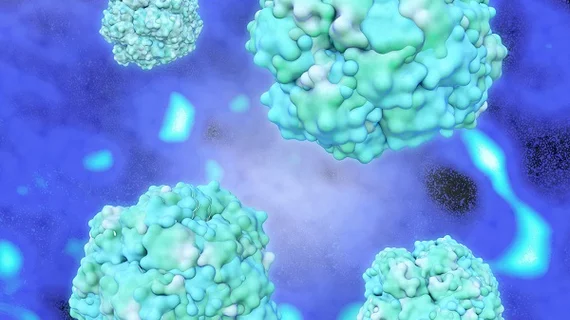For patients with metastatic prostate cancer, understanding its genesis and evolution can mean all the difference for treatment. But, what if, as a recent Journal of Nuclear Medicine perspective proposes, a new “clinical state” could improve understanding and treatment of the disease?
Hossein Jadvar, MD, PhD, with the University of Southern California in Los Angeles examined what previous researchers termed the “oligometastatic” state. The term is used to describe a step in metastatic cancer progression between the “localized confined process to a disseminated state,” according to the July 20 article.
“The postulate here is that oligometastatic lesions are early along their evolutionary line of metastatic potentiation,” he wrote. “The management implication then follows that in some patients with oligometastases, cure may still be possible with definitive metastasis‐directed therapies (MDTs) and minimal systemic toxic effects.”
Currently, imaging plays a pivotal role in the acceptance of this state, Jadvar wrote. Techniques such as stereotactic body radiation therapy-(SBRT) and local ablation have increased clinical interest in oligometastic disease. However, evidence for taking this treatment approach is lacking, and few studies have done much to prove otherwise.
Jadvar highlighted one study, where researchers analyzed 62 asymptomatic non-castrated men with prior treatment for primary prostate cancer. All experienced biochemical recurrence with three or less extracranial metastases on choline PET and were separated into either a surveillance or MDT (surgery or SBRT) of oligometastases group.
The goal endpoint in the study was androgen-deprivation therapy (ADT)-free survival with median follow-up at three years. That was achieved and sustained longer with MDT than surveillance, Jadvar wrote.
A similar phase II randomized trial is underway to compare non-castrate oligometastatic prostate cancer patients treated with surveillance or selective ablative radiotherapy of metastatic lesions. Researchers will measure SABR-directed therapy of oligometastases on circulating tumor cells, circulating tumor DNA and immunologic response.
Plenty of issues must be resolved before oligometastases can become part of routine management in prostate cancer patients, Jadvar argued.
For one, he argued a “biological anchor” is required to determine if oligomatasatates lesions are different from their polymetastatic counterparts and how the former evolves into the latter.
In addition, basic problems such as the lack of standard definition for the clinical state, as well as a cohesion in describing the condition as it’s currently used in clinical scenarios with what he believes to be varying underlying biology, Jadvar noted.
“While the concept of oligometastatic is interesting but there is still more basic research that needs to be done to establish it firmly as a distinct biological entity along the natural history of prostate cancer,” Jadvar wrote. “These critical prerequisites will elucidate whether detection and management of oligometastases should be incorporated into the routine clinical management of patients with prostate cancer.”

